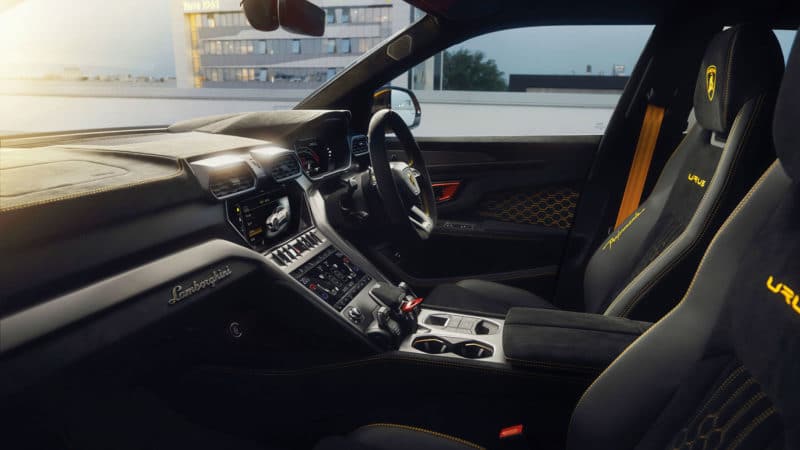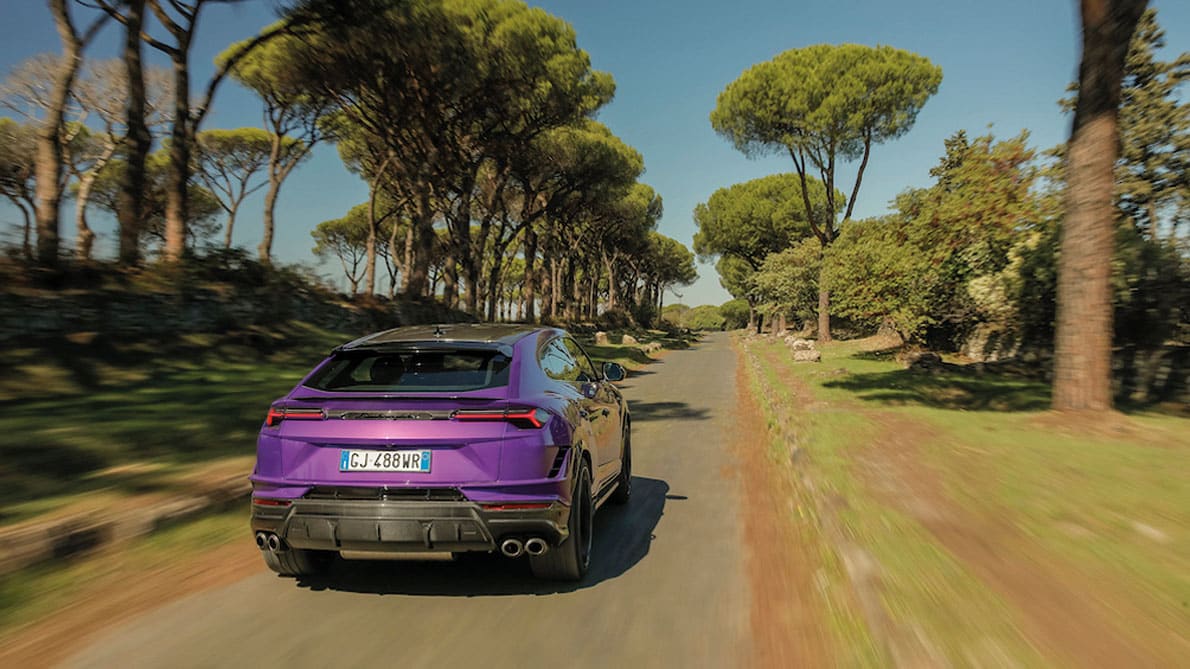
2026 Eagle E-type review: £1m coupe is a fearsome featherweight
The lightweight Jaguar E-type has enjoyed successes in later life far beyond the imaginings of what it achieved in period. When we think of them, it’s usually duking it out…

It’s a supercar that hasn’t been on a diet. This monster Lamborghini SUV boasts some mind boggling numbers.
The time will come when we look back at cars like this Lamborghini Urus Performante and simply goggle that it even ever existed. “What were they thinking of?” our descendants will say. “How could they possibly think that such a car ever constituted a good idea for anyone?”
‘Such a car’ is an enormous SUV with even more power than the car upon which it is based, with even more performance provided for even more money. And the fact that it also weighs a little less is really neither here nor there in the context of a car that already weighs so much.
And yet not only does it exist, it exists in a class with a competitor set, including cars from Porsche, from Aston Martin, and Bentley. Even Ferrari is getting in on the game with its new Purosangue, albeit at a rather different price point. Moreover, such cars are genuinely popular, not merely with the customers who buy them but particularly with the manufacturers who make them, because they sell in large numbers, and with a healthy profit margin.
All the key statistics surrounding the Urus Performante read like misprints. Its twin turbo, V8 engine now develops 657bhp, it will reach 62mph from rest in 3.3 seconds, it has a top speed of 190mph, it weighs 2150kg and it costs £204,000. Truly, this is excess all areas in automotive form.

For all its impressive traits, the Urus Performante still has issues, ride being a very noticeable one
Your eyes will tell this Urus from the standard car by its vented bonnet and carbon fibre wheel arch extensions. Your ears will tell it thanks to the fully titanium Akrapovic exhaust. But to appreciate the most substantial changes, you’ll have to drive it. Do this, and you will discover the effects of a chassis which has been lowered by 10mm, its comfort-oriented triple chamber air suspension replaced by stiffer, racier coil units, its steering rack quickened and a more rearward torque bias achieved through the reprogramming of its Torsen centre differential. The result is an automotive novelty act, a car able do things common sense suggests should be beyond the ability of anything of this size and weight. It is, of course, preposterously fast in a straight line, but that in itself is perhaps the least surprising aspect of this Lamborghini’s performance. What is far more memorable is the dogged determination with which it clings to your chosen line through a curve, almost irrespective of how hard you are trying to push it.
It corners flat and unfeasibly fast for a car of this mass and these proportions, and while it never feels smaller or lighter than it actually is, I must concede that it is far more capable and impressive than I had imagined, despite having driven the standard Urus over long distances.
But is it actually fun? Fun in a way that makes you not just want to seek out decent roads, but set an alarm for the early hours of the morning to ensure those roads are traffic free? It would be one of the most remarkable achievements were that the case, for that is not something that I would choose to do even in the aforementioned Ferrari. Truth is you could buy a Mazda MX-5 for £1500 and find yourself having far more fun on such a road than you would ever have in any of these overblown SUVs. But that does not mean such cars cannot be impressive in such an environment, and the Lamborghini is nothing if not that. Nor is it merely superficially capable; even when the weather and the surface are far from ideal, the Lamborghini’s composure remains rock solid. Like these cars or not, it is hard to deny that in this regard at least, Lamborghini’s engineers have done a very impressive job.
But there are problems, and not just those you expect, namely the appalling fuel consumption, sky-high emissions, and that nagging suspicion that every other road user hates you. The only way that Lamborghini has been able to persuade a car of such height and weight also to handle so capably is to tie it down in its springs to such an extent that its body scarcely moves at all. Which means that on the vast majority of occasions when you’re not driving it like your trousers are on fire, the ride quality is mediocre at best and at times makes you want to get out of the car and walk.
Which, I have to say, was never a feeling I had when driving its closest real-world rival, the Aston Martin DBX707.
The Aston provides a driving experience just as rich, if that is even a word to use in the context of such cars, but remains at all times a quiet, comfortable and civilised car in which you and your family can go about their business.
Of course Lamborghinis are all about flamboyance, drama both visual and aural, of making a statement by projecting a very bold era. And by its own terms of reference, the Urus still does that job better than any other, which helps explain its phenomenal success. But if you want something a bit more rounded and user-friendly from your full-size high performance SUV, the Aston is unquestionably the better option.

Price £204,213
Engine 4 litres, eight cylinders, petrol, twin turbo
Power 657bhp at 6000rpm
Torque 627lb ft at 2300rpm
Weight 2150kg (DIN)
Power to weight 305bhp per tonne
Transmission Eight-speed double clutch, four-wheel drive
0-62mph 3.3sec
Top speed 190mph
Economy 20.0mpg
CO2 320g/km
Verdict Impressive, but ludicrous.

The lightweight Jaguar E-type has enjoyed successes in later life far beyond the imaginings of what it achieved in period. When we think of them, it’s usually duking it out…

A spot of festive cheer with which to bring in your New Year, the result of a chat with Andy Morley, managing director of Hewland Engineering. Hewland will scarcely need…

Car of the month – Defender Dakar D7X-R https://www.youtube.com/watch?v=5RBYsZVewcE I haven’t spotted this on the school run! And chances are you won’t – unless your kids happen to be educated…

It seems to me that the motor industry and its customers are somewhat out of step. It’s nobody’s fault and hard to see how it could be avoided, but just…

I grew up on Jersey and recently returned to catch up with some friends and family, one of whom, fine fellow that he is, said he’d be happy to lend…

As I write this, Jaguar Land Rover is at last starting to gear up again after its UK factories were brought to a shuddering halt at the end of August.…

I have a friend called Richard Bremner. You may know the name because he was a long-time staffer and former editor of Car magazine and is a current contributor to…

From 1911 to 1994, the Indianapolis Motor Speedway was pretty much a one-trick pony. The gates opened on May 1, the Indianapolis 500 was contested a few weeks later, and…

You’ll not have failed to notice that electric vehicles are now being thrown at us thick and fast, and I’m afraid to report that most I drive are still heavy,…

I have always considered what I do to be a young man’s game, inconvenient for me insofar as by the time you chance upon this column, you’ll be reading the…

The late monarch’s Range Rover went for 10 times the typical price of a similar non-Royal model

Late backer of the McLaren F1 team Mansour Ojjeh’s entire 20-car McLaren collection has been snapped up by one undisclosed buyer